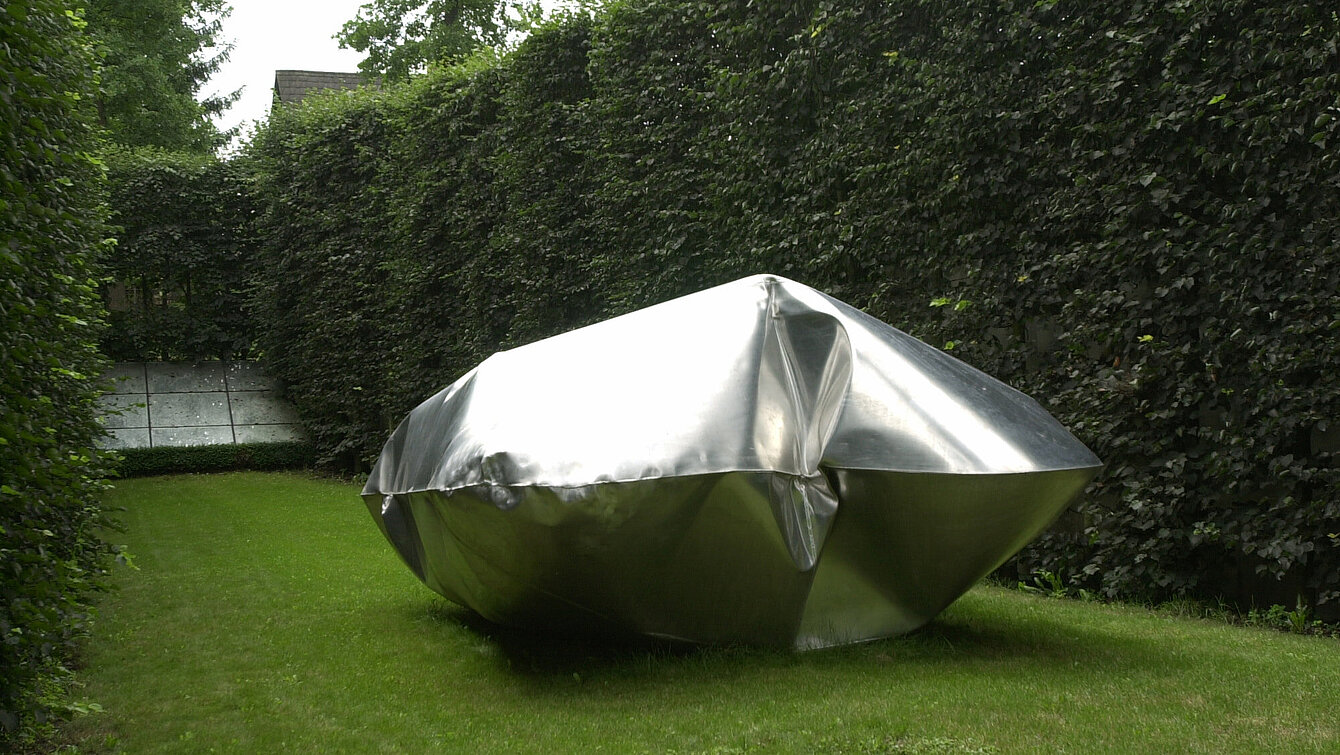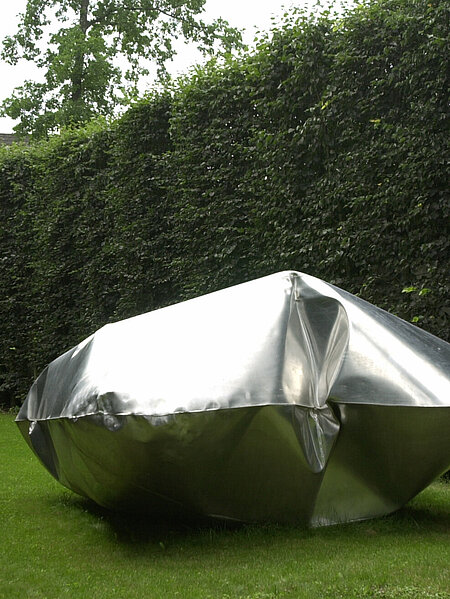Since the 1990s, Kupelwieser has been working with sculptures that are produced by using compressed air. He calls these works Gonflables (from French gonflable, inflatable). However, they are not made of easily malleable plastic foil but instead from metal, which is difficult to shape. In this way, he subverts our expectations. The sculptures gain their form when specially welded, thin aluminium sheets are inflated under maximum air pressure. By this method, the artist gives the hard, heavy material a dynamic lightness. The result is different every time and the surface structures achieved are, to a large extent, determined by chance.
Gonflable 6
Hans Kupelwieser, 2002


Image Credits
Author
Christa Steinle
Location on map
Position 38
Owner
Leihgabe des Künstlers
Artist biography
Hans Kupelwieser
Show all
About the sculpture
Since the beginning of the 1990s, Hans Kupelwieser has been working with pneumatic sculptures that he calls “Gonflables“. One of the aluminium sculptures of a series dating from 1994 has found a permanent home in the sculpture park.
The creation process of the figures has a strong random element as the sculptures are given their shape when specially welded, thin aluminium sheets are pumped up under maximum pressure (“gonflable” is French for “inflatable”). The result can thus not be predicted in advance – the sheets change shape depending on the air pressure and develop different surface structures with indentations, folds and ridges. They are either exhibited as closed floor-based sculptures or accessible wall objects, such as the installation “Blase in die Ecke“ [Bubble in the corner], a metal bubble mounted in the courtyard of the Neue Galerie Graz in 2004, which seemed to hover in the air.
Aluminium, Kupelwieser’s material of choice, invites the reflection on historical positions, such as Andy Warhol’s “Silver Clouds“ from 1966, the metalised, helium-filled polyester balloons that floated through the exhibition area of the New York-based Leo Castelli Gallery, or the pneumatic objects made from transparent PVC wrappers that were developed as futuristic interior design objects by Austrian artists and architects in the 1960s, for instance by Hans Hollein, Walter Pichler or Hausrucker-Co.
But with the illusionary use of material, Kupelwieser adds an important dimension to the concept: his material is not plastic film, which is easily shaped by air currents, but a metal that is considerably harder to mould. This material simulates a function and ability that do not exist in reality. The interlinking of material and operational expansion, the play with shapes and functions constitute an independent thread in the complex fabric of contemporary sculpture; a thread that Kupelwieser keeps developing further.


















